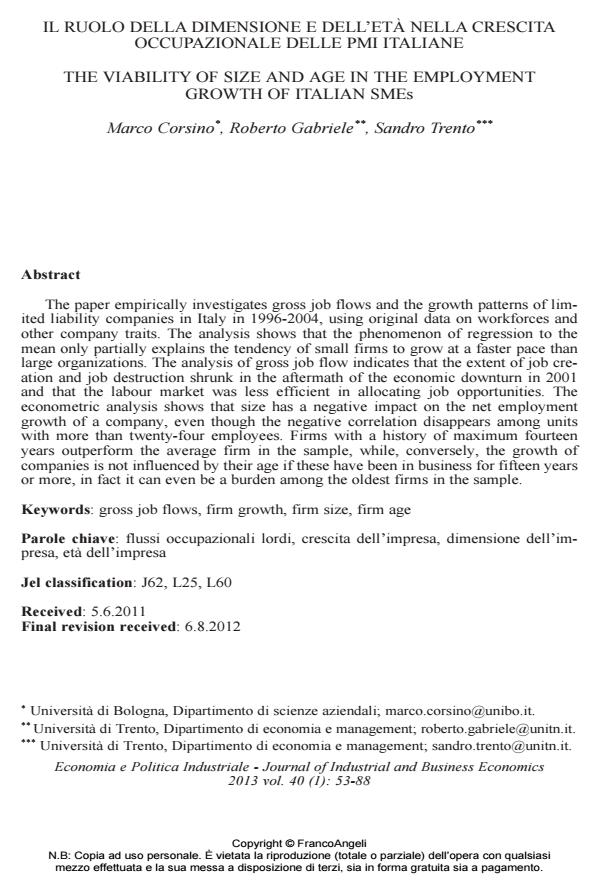Ihe viability of size and age in the employment growth of italian smes
Journal title ECONOMIA E POLITICA INDUSTRIALE
Author/s Marco Corsino, Roberto Gabriele, Sandro Trento
Publishing Year 2013 Issue 2013/1
Language Italian Pages 36 P. 53-88 File size 705 KB
DOI 10.3280/POLI2013-001003
DOI is like a bar code for intellectual property: to have more infomation
click here
Below, you can see the article first page
If you want to buy this article in PDF format, you can do it, following the instructions to buy download credits

FrancoAngeli is member of Publishers International Linking Association, Inc (PILA), a not-for-profit association which run the CrossRef service enabling links to and from online scholarly content.
The paper empirically investigates gross job flows and the growth patterns of limited liability companies in Italy in 1996-2004, using original data on workforces and other company traits. The analysis shows that the phenomenon of regression to the mean only partially explains the tendency of small firms to grow at a faster pace than large organizations. The analysis of gross job flow indicates that the extent of job creation and job destruction shrunk in the aftermath of the economic downturn in 2001 and that the labour market was less efficient in allocating job opportunities. The econometric analysis shows that size has a negative impact on the net employment growth of a company, even though the negative correlation disappears among units with more than twenty-four employees. Firms with a history of maximum fourteen years outperform the average firm in the sample, while, conversely, the growth of companies is not influenced by their age if these have been in business for fifteen years or more, in fact it can even be a burden among the oldest firms in the sample.
Keywords: Gross job flows, firm growth, firm size, firm age
Jel codes: J62, L25, L60
Marco Corsino, Roberto Gabriele, Sandro Trento, Il ruolo della dimensione e dell’età nella crescita occupazionale delle PMI italiane in "ECONOMIA E POLITICA INDUSTRIALE " 1/2013, pp 53-88, DOI: 10.3280/POLI2013-001003